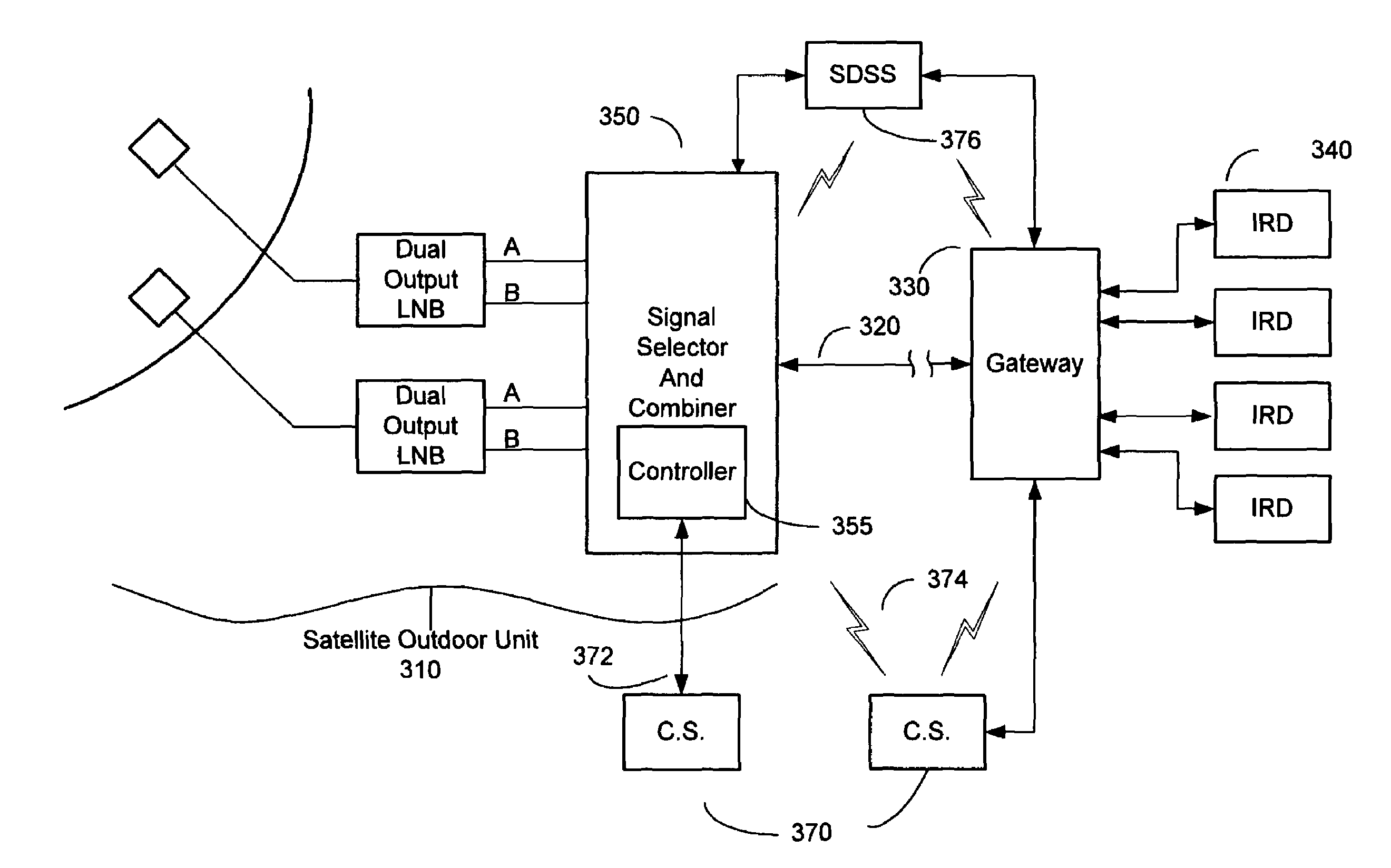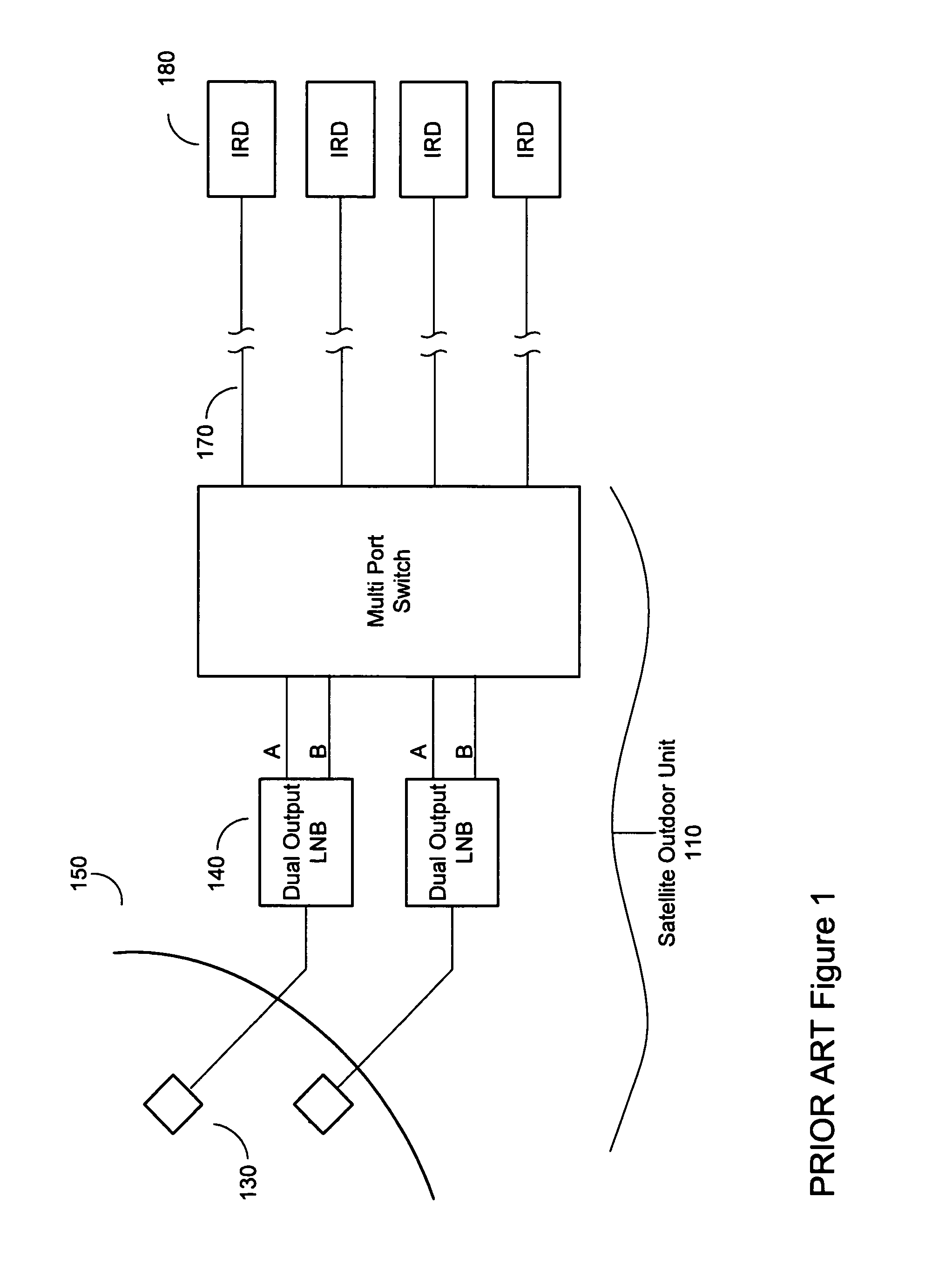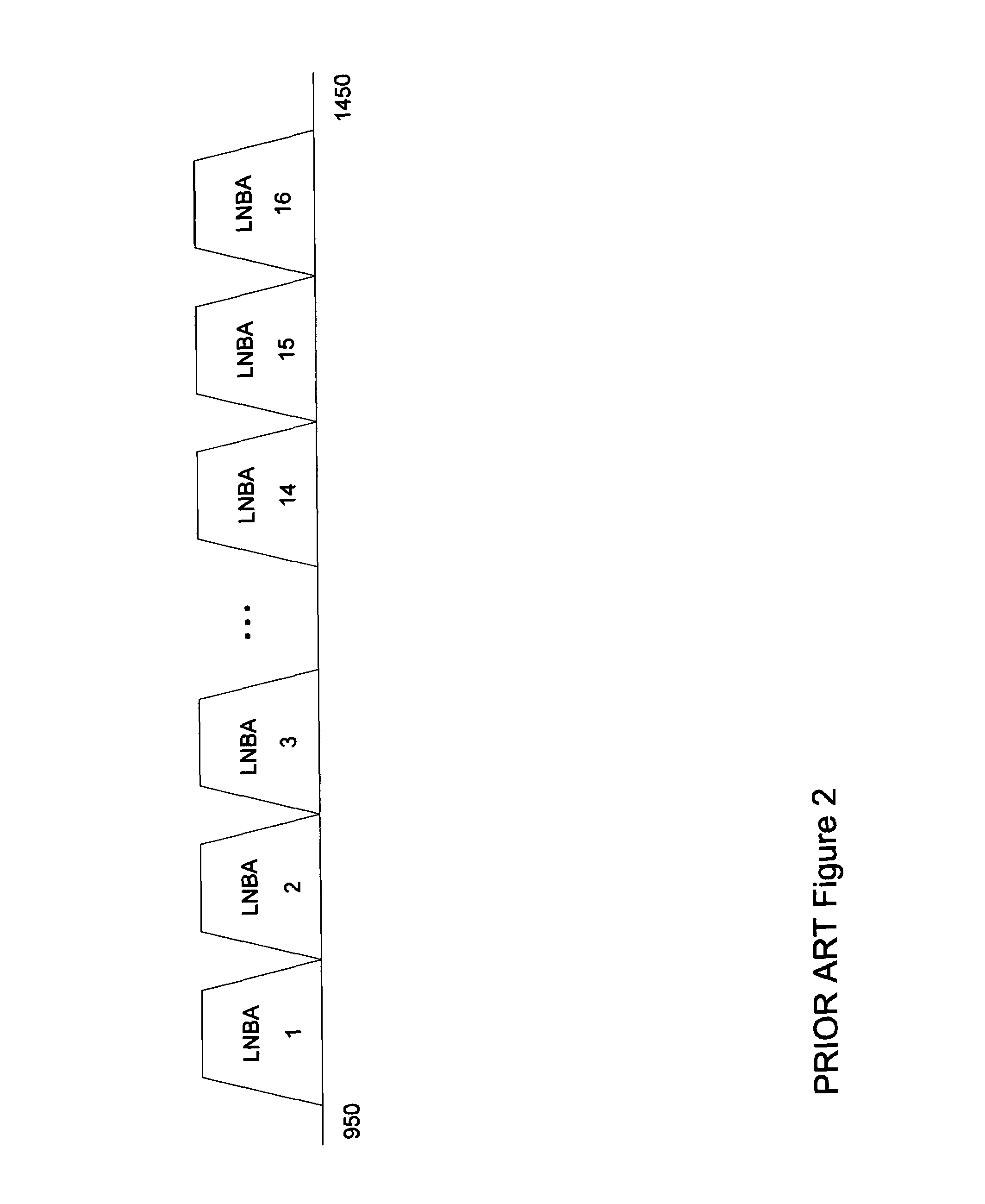Signal selector and combiner system for broadband content distribution
a broadband content and selector technology, applied in the field of satellite signal reception, can solve the problems of complex circuit, increased problem, more susceptible to multipath impairment in the cable environment, etc., and achieve the effect of eliminating the cross-point switch
- Summary
- Abstract
- Description
- Claims
- Application Information
AI Technical Summary
Benefits of technology
Problems solved by technology
Method used
Image
Examples
Embodiment Construction
[0038]FIG. 3 illustrates a satellite TV reception installation where a satellite outdoor unit 310 is capable of receiving at least one wide band signal comprising at least one narrow band signal. This invention may be implemented using L-band, C-band or Ku-band frequencies. Signal selector 350, part of satellite outdoor unit 310, extracts the needed transponder channels from each of the low noise amplifier and block down converters (“LNB”) outputs and combines the channels into one composite signal transmitted on cable 320. Gateway 330 receives the signals and provides distribution to the IRDs located in the building. Controller 355 is responsible for communicating channel map, control, and status information with gateway 330 and IRDs 340. Controller 355 also tunes filters and local oscillators in the signal selector and maintains the channel map specifying the assigned frequency slots for transponder channels.
[0039]The controller 355 also allows users to specify frequency values of...
PUM
 Login to View More
Login to View More Abstract
Description
Claims
Application Information
 Login to View More
Login to View More - R&D
- Intellectual Property
- Life Sciences
- Materials
- Tech Scout
- Unparalleled Data Quality
- Higher Quality Content
- 60% Fewer Hallucinations
Browse by: Latest US Patents, China's latest patents, Technical Efficacy Thesaurus, Application Domain, Technology Topic, Popular Technical Reports.
© 2025 PatSnap. All rights reserved.Legal|Privacy policy|Modern Slavery Act Transparency Statement|Sitemap|About US| Contact US: help@patsnap.com



